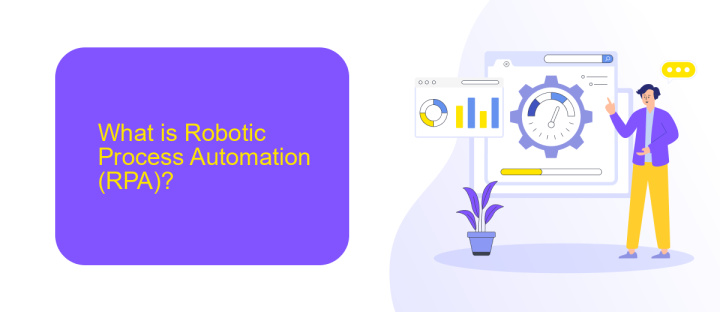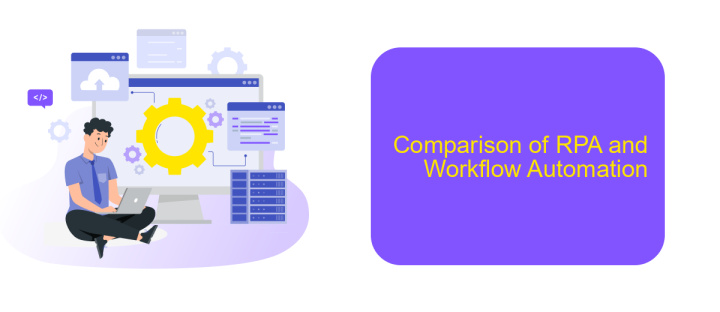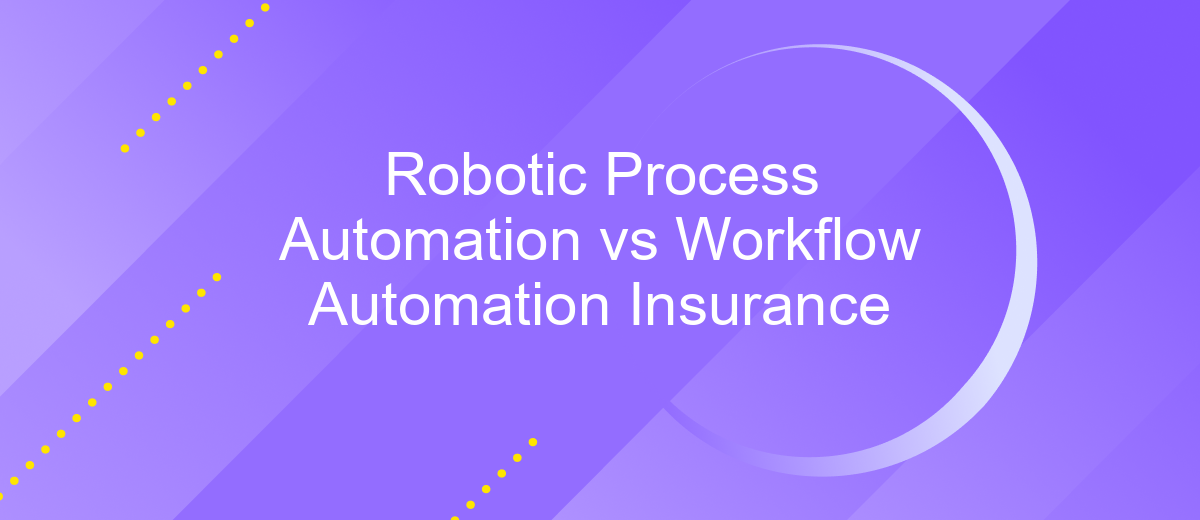Robotic Process Automation vs Workflow Automation Insurance
In the rapidly evolving insurance industry, efficiency and accuracy are paramount. Robotic Process Automation (RPA) and Workflow Automation are two powerful technologies driving transformation. While both aim to streamline operations and enhance productivity, they differ significantly in their approach and application. This article explores the distinctions between RPA and Workflow Automation, helping insurers make informed decisions for optimizing their processes.
Introduction
In the ever-evolving insurance industry, the need for efficiency and accuracy has never been greater. Two key technologies have emerged to address these needs: Robotic Process Automation (RPA) and Workflow Automation. Both offer unique advantages, yet they serve different purposes and can be leveraged in various ways to optimize insurance processes.
- Robotic Process Automation (RPA): Focuses on automating repetitive, rule-based tasks typically performed by humans.
- Workflow Automation: Streamlines and automates entire business processes, coordinating tasks across different systems and departments.
Understanding the differences between RPA and Workflow Automation is crucial for insurance companies aiming to enhance operational efficiency. While RPA can handle specific tasks like data entry and claims processing, Workflow Automation manages the overall process flow, ensuring that each step is completed in sequence. Additionally, tools like ApiX-Drive can facilitate seamless integration between various systems, making it easier to implement and manage these automation solutions. By combining both technologies, insurers can achieve a higher level of productivity and customer satisfaction.
What is Robotic Process Automation (RPA)?

Robotic Process Automation (RPA) is a technology that uses software robots or 'bots' to automate repetitive, rule-based tasks traditionally performed by human workers. These bots can mimic human interactions with digital systems, such as logging into applications, entering data, performing calculations, and extracting information. RPA is designed to streamline business processes, reduce human error, and improve efficiency by handling high-volume tasks quickly and accurately.
Unlike traditional automation tools that require extensive programming, RPA platforms are user-friendly and often come with drag-and-drop interfaces, making it accessible for non-technical users. One of the key advantages of RPA is its ability to integrate with existing systems without the need for significant changes to the underlying infrastructure. For instance, services like ApiX-Drive facilitate seamless integration between various software applications, enhancing the capabilities of RPA by enabling smooth data transfer and communication across different platforms. This makes RPA a versatile solution for businesses looking to optimize their operations and improve productivity.
What is Workflow Automation?

Workflow automation is the process of designing, executing, and automating business processes where tasks, information, or documents are passed from one participant to another for action, according to a set of procedural rules. This streamlines operations, reduces manual effort, and improves overall efficiency.
- Identify repetitive tasks: Determine which tasks in your workflow are repetitive and time-consuming.
- Choose the right tools: Utilize software like ApiX-Drive for seamless integration and automation of various applications and services.
- Define rules and conditions: Set up specific rules and conditions that trigger automated actions.
- Monitor and optimize: Continuously monitor the automated workflows and make necessary adjustments for improvement.
By implementing workflow automation, businesses can minimize human error, enhance productivity, and ensure that processes are completed consistently and on time. Tools like ApiX-Drive facilitate the integration of various systems, making it easier to automate complex workflows without extensive technical expertise.
Comparison of RPA and Workflow Automation

Robotic Process Automation (RPA) and Workflow Automation are two distinct approaches to streamlining business processes, each with its own set of advantages. RPA focuses on automating repetitive tasks by mimicking human actions, making it ideal for tasks that involve interacting with multiple systems. Workflow Automation, on the other hand, is designed to manage and automate a series of tasks within a defined process, ensuring that each step is completed in the correct order.
One of the key differences between RPA and Workflow Automation is their scope of application. RPA is typically used for tasks that require interaction with various software applications, while Workflow Automation is better suited for processes that follow a specific sequence of steps. Additionally, RPA often requires less initial setup compared to Workflow Automation, which may involve more complex configurations.
- RPA automates individual tasks, Workflow Automation manages entire processes.
- RPA is ideal for interacting with multiple systems, Workflow Automation focuses on task sequence.
- RPA setup is generally quicker, Workflow Automation may need more configuration.
Both RPA and Workflow Automation can significantly enhance efficiency and reduce errors in business operations. Tools like ApiX-Drive can further simplify the integration process, making it easier to connect various applications and automate workflows seamlessly. Choosing the right approach depends on the specific needs and complexity of the tasks or processes involved.
- Automate the work of an online store or landing
- Empower through integration
- Don't spend money on programmers and integrators
- Save time by automating routine tasks
Conclusion
In conclusion, the choice between Robotic Process Automation (RPA) and Workflow Automation in the insurance sector depends largely on the specific needs and goals of the organization. RPA offers a robust solution for automating repetitive, rule-based tasks, significantly reducing manual effort and minimizing human error. On the other hand, Workflow Automation provides a more holistic approach, streamlining entire processes and improving overall operational efficiency.
Both technologies have their unique advantages and can often complement each other when integrated effectively. For instance, leveraging services like ApiX-Drive can facilitate seamless integration between RPA tools and workflow automation systems, ensuring a cohesive and efficient automation strategy. Ultimately, insurers should assess their specific requirements and consider a hybrid approach that combines the strengths of both RPA and Workflow Automation to achieve optimal results.
FAQ
What is the difference between Robotic Process Automation (RPA) and Workflow Automation in the insurance industry?
Can both RPA and Workflow Automation be used together in an insurance company?
What are the benefits of using RPA in the insurance sector?
How can Workflow Automation improve efficiency in insurance processes?
What tools can help integrate RPA and Workflow Automation in an insurance company?
Apix-Drive is a universal tool that will quickly streamline any workflow, freeing you from routine and possible financial losses. Try ApiX-Drive in action and see how useful it is for you personally. In the meantime, when you are setting up connections between systems, think about where you are investing your free time, because now you will have much more of it.


